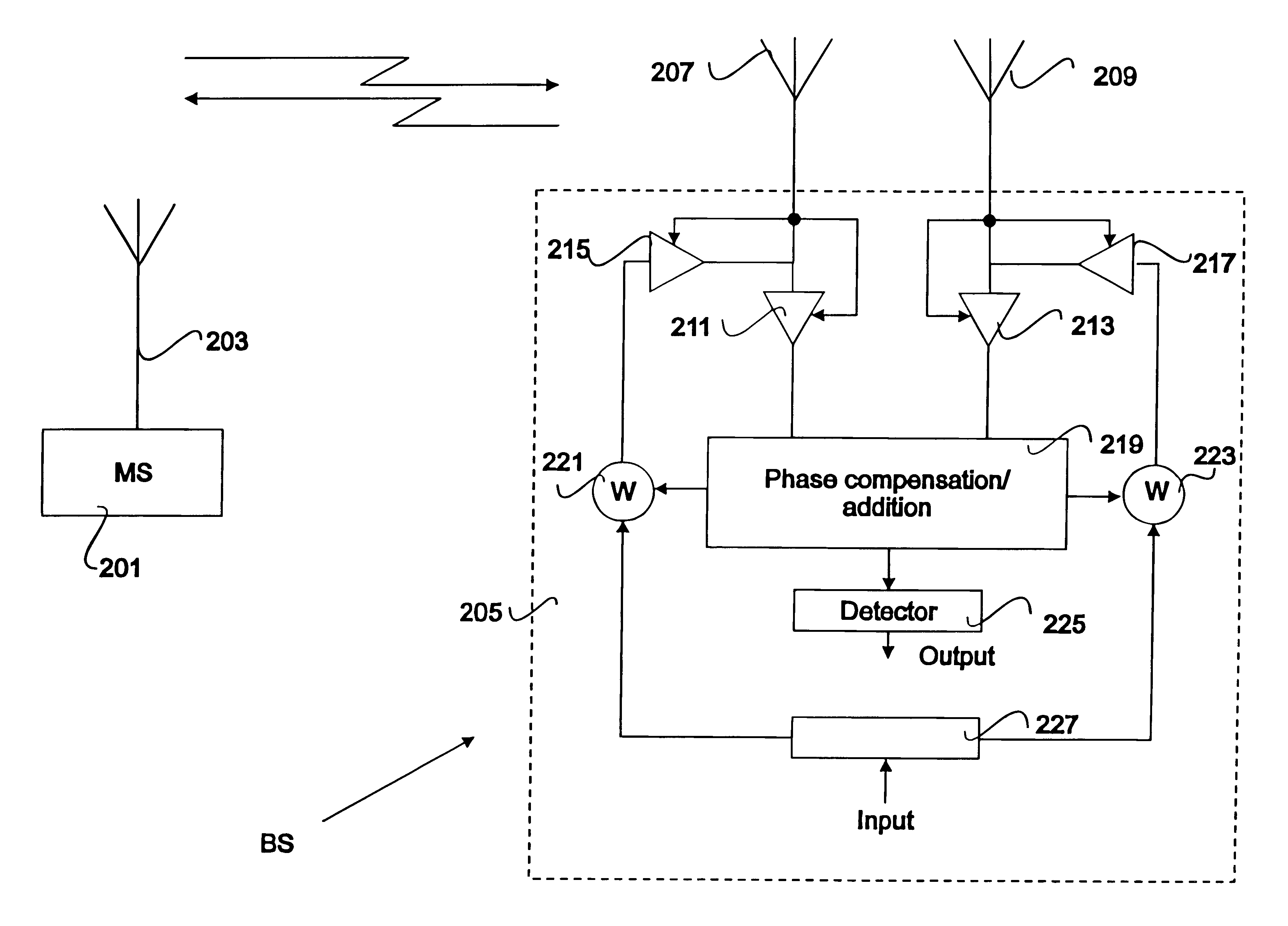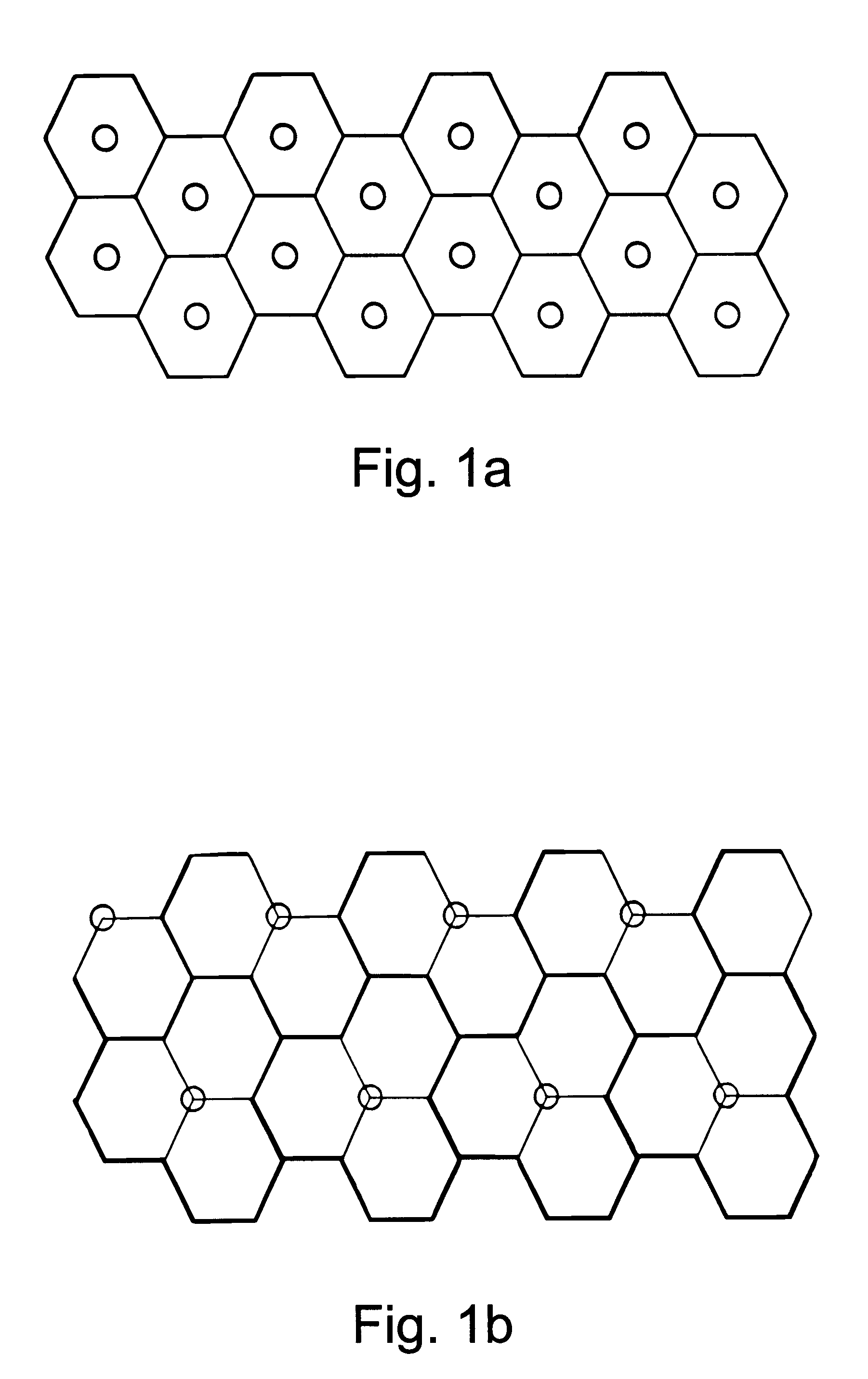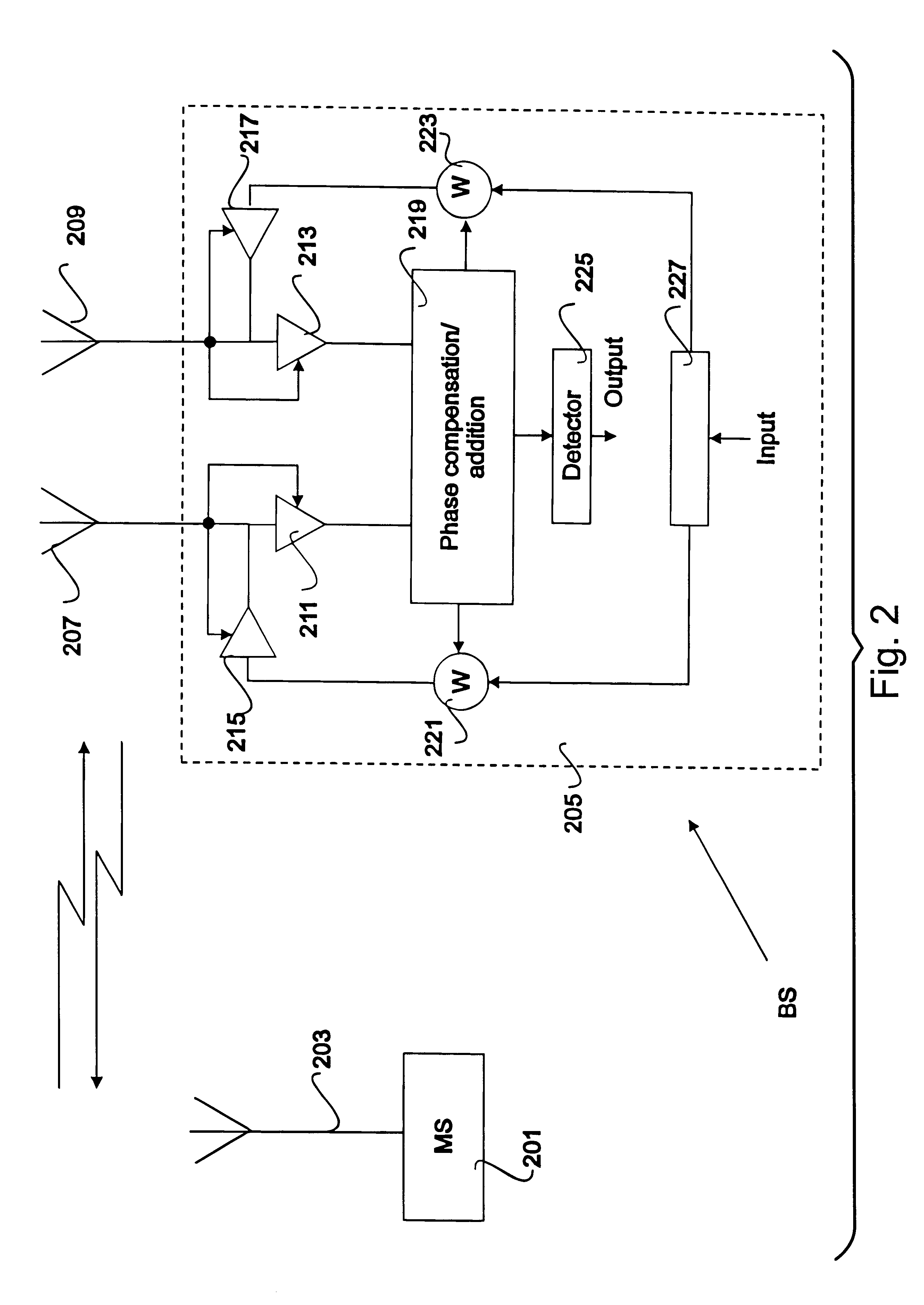Method and a system for radio transmission
a radio transmission and radio technology, applied in the field of radio transmission methods and systems, can solve the problems of inability to use frequency diversity systems and other types of diversity systems to increase the required frequency range, and may not be feasible for long distances
- Summary
- Abstract
- Description
- Claims
- Application Information
AI Technical Summary
Benefits of technology
Problems solved by technology
Method used
Image
Examples
Embodiment Construction
In FIG. 2 a principal view of a cellular radio transmission system is shown. Thus, a mobile station is shown at 201. The mobile station 201 has an antenna 203 by means of which it can communicate with a base station shown at 205. The base station 205 has two antennas 207 and 209.
The base station 205 shown in FIG. 2 is designed for maximum ratio combining diversity. Thus, the SNR is derived from the signals received by the antennas 207 and 209. The SNRs are used for setting amplifiers 211 and 213 to values corresponding to the measured SNRs. In other words, the receiving branch having a better SNR will be more amplified than the receiving branch having a small SNR.
The same value as is set for the amplifier 211 is at the same time set for an amplifier 215 and the same value set for the amplifier 213 is set for an amplifier 217. The amplifiers 215 and 217 form a part of the transmission circuit of the base station 205 and are also connected to the antennas 207 and 209, which thus are u...
PUM
 Login to View More
Login to View More Abstract
Description
Claims
Application Information
 Login to View More
Login to View More - R&D
- Intellectual Property
- Life Sciences
- Materials
- Tech Scout
- Unparalleled Data Quality
- Higher Quality Content
- 60% Fewer Hallucinations
Browse by: Latest US Patents, China's latest patents, Technical Efficacy Thesaurus, Application Domain, Technology Topic, Popular Technical Reports.
© 2025 PatSnap. All rights reserved.Legal|Privacy policy|Modern Slavery Act Transparency Statement|Sitemap|About US| Contact US: help@patsnap.com



